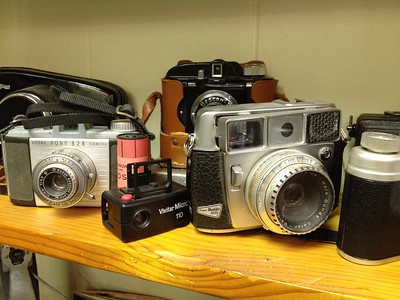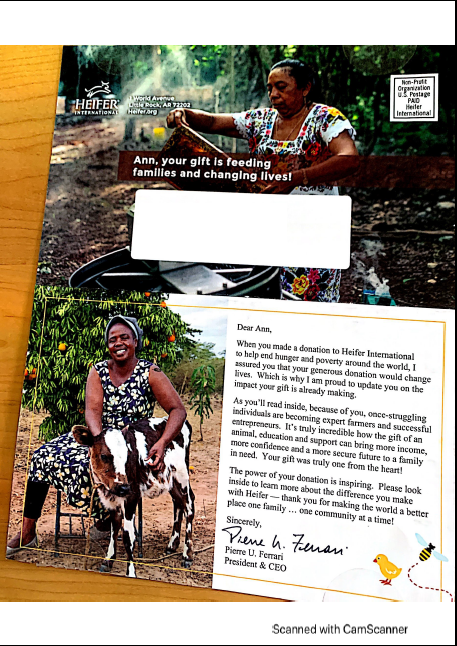Stories come in many forms. You can tell a story with words, pictures, and videos. I prefer written stories, but others are drawn to videos. Some people might not have the time or energy to look at anything but a photo or infographic.
Your nonprofit organization needs to share stories using all these forms. Sharing stories will help you connect with your donors.
Donors want to hear your stories
I imagine you’re not using stories as much as you should. That’s a mistake because people respond better to stories than a bunch of facts and statistics. Stories bring the work you do to life by using everyday language to create a scene.
You may be reluctant to use stories because it’s more work for your organization, but that shouldn’t stop you. Make time to come up with some engaging stories.
Your stories need to be relevant
Update your stories at least once a year. They need to take the everchanging current situations into account. How are the economy, the aftereffects of the pandemic, discrimination, climate change, etc impacting your clients/community right now?
Create a culture of storytelling
If you create a storytelling culture in your organization, you can make storytelling the norm instead of the exception.
Work with your program staff to create stories that will help you connect with your donors. Everyone needs to understand how important this is. Share stories at staff meetings and/or set up regular meetings with program staff to gather stories.
When you put together a story, ask.
- Why is this important?
- Who is affected?
- Why would your donors be interested in this story?
- Are you using clear, everyday language (no jargon) to make sure your donors understand your story?
- How are your donors helping you make a difference or How can your donors help you make a difference?
Client or program recipient stories are best. Remember, donors want to hear how they’re helping you make a difference for your clients/community.
Another way to find stories is to put a Share Your Story page on your website. This could be a good way to get some current, relevant stories.
Your stories aren’t about your organization
Keep in mind that your stories aren’t about your organization. Your organization may have had to make a lot of changes over the last few years to do some of the work you do, but that’s not your story. Your story is why this is important for the people/community you work with.
Maybe you had to change the way you run your food pantry, but what’s most important is that people in your community continue to have access to healthy food.
Make your stories personal
Tell a story of one (person or family). Use people’s names to make your stories more personal. I realize you might run into confidentiality issues, but you can change names to protect someone’s privacy. You could also do a composite story, but don’t make up anything.
Use different stories for different types of communication
Create a story bank to help you organize all your stories. You want to use stories as much as possible. Use them in your appeals, thank you letters, newsletters, updates, impact (annual) reports, website, blog, and other types of social media.
While you can come up with some core stories, they’ll be slightly different depending on the type of communication.
In a fundraising appeal (all appeals should start with a story), you want to highlight a problem or need. Let’s return to the food pantry example. Here you can tell a story about Melanie, a working single mother with three kids who’s having trouble feeding her family because of rising food costs and cuts in benefits.
In your thank you letter, you can let your donor know that because of their generous gift, Melanie can get healthy food for her family at the Eastside Community Food Pantry.
Then in your newsletter, impact report, or update, you can tell a success story that because of your generous donors, Melanie doesn’t have to worry so much about how she’ll be able to feed her family.
Tell a story in an instant with an engaging photo
You’ve probably heard the phrase a picture is worth a 1000 words. Cliche, yes, but it’s true.
You can capture your donors’ attention in an instant with an engaging photo. That doesn’t mean one of your executive director receiving an award. Use photos of your programs in action or something else that’s engaging.
Print newsletters and impact reports tend to be dominated by long-winded text. Most of your donors won’t want to read the whole thing. But if you share some engaging photos, they can get a quick glance at the impact of their gift without having to plow through a bunch of tedious text.
Photos can enhance your print communication by breaking up the narrative. You can also complement your written stories with photos. If you’re worried about mailing costs, postcards and other short pieces with photos are the way to go. You could even do a Postcard Impact/Annual Report.
If you use social media, you need to communicate several times a week. As your donors scroll through an endless number of posts, an engaging photo can stand out and get their attention.
Use photos everywhere – fundraising appeals, thank you letters/cards, newsletters, impact reports, updates, your website, and social media. Create a photo bank to help you with this.
It’s fine to use the same photos in different channels. It can help with your brand identity. Be sure to use high-quality pictures. Also, make sure your photos match your messages. If you’re writing a fundraising appeal about children who aren’t getting enough to eat every day, don’t use a picture of happy kids.
Work with your program staff to get photos and videos (more on videos below). Confidentiality issues may come up and you’ll need to get permission to use pictures of kids.
Showcase your work with a video
Videos are becoming a more popular way to connect. They can be used to show your programs in action, share an interview, give a behind-the-scenes look at your organization, or my favorite – thanking your donors.
I would definitely recommend creating a personalized thank you video. If that’s not possible, you can make a general one.
Make your videos short and high quality. Short is key. If your video is more than a couple of minutes, your donors may not bother to watch it.
You can use videos on your website, in an email message, on social media, and at an event.
Spiff up your statistics by using infographics
A typical impact report is loaded with statistics. You want to share these, along with your accomplishments, but you don’t want to overwhelm your donors with a lot of text.
Why not use an infographic in your impact report instead of including the usual laundry list of statistics and accomplishments?
Infographics are also great in other types of communication such as newsletters and updates. Good visuals will enhance both your print and electronic communication.
Connect with your donors and keep them engaged by using all types of stories.







